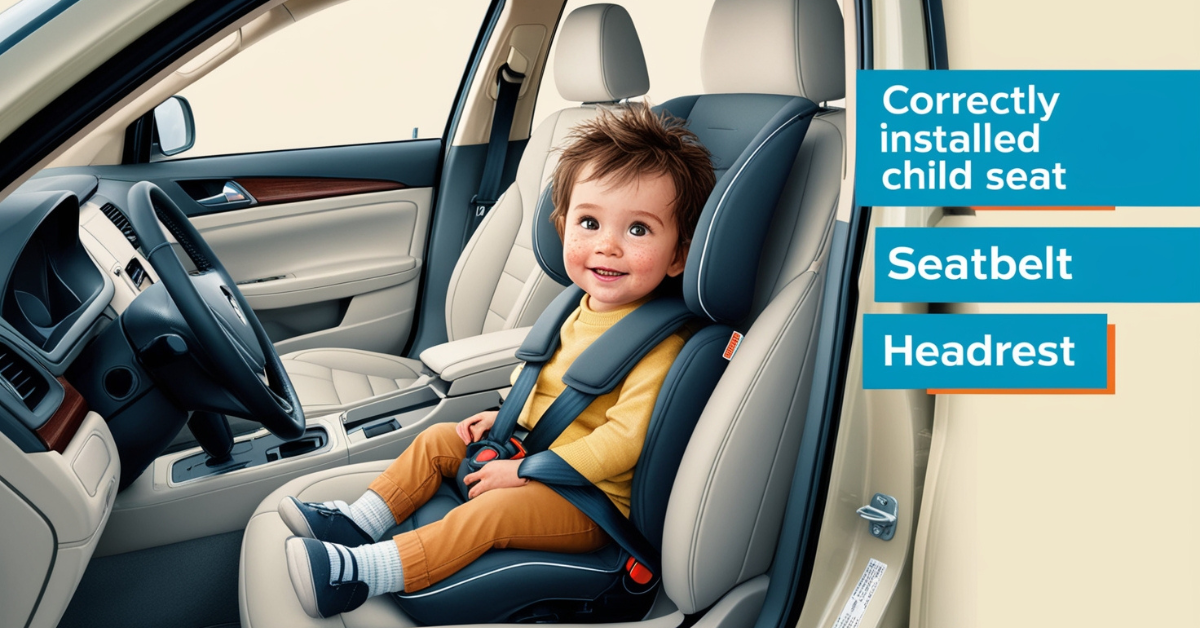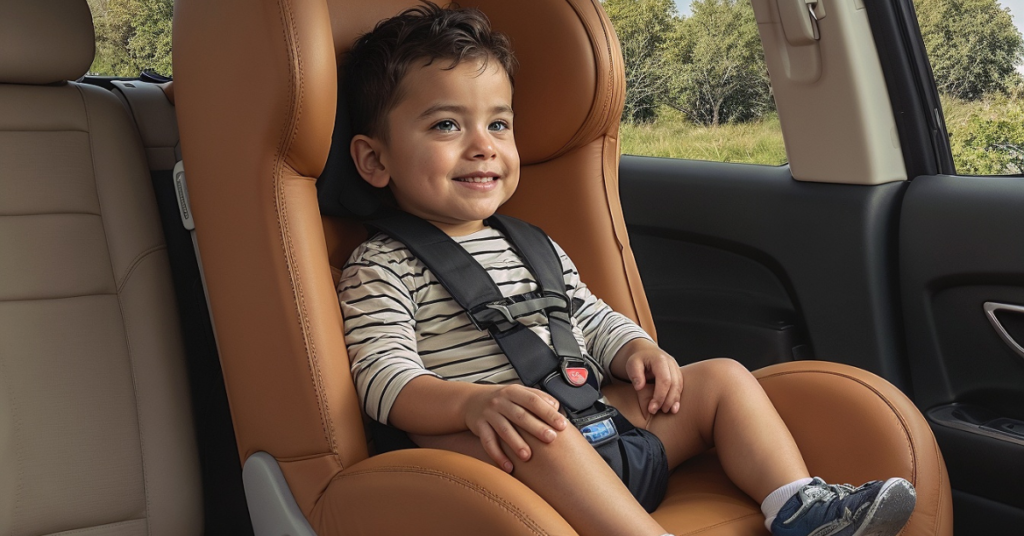
Today everyone looks for security. Be it anywhere—home, garden, public roads, traveling, etc. In any place, one prefers safety. One such safety is traveling too. One does not forget to have car insurance, life insurance, a proper vehicle, and a seat belt to stay safe while travelling.
Sometimes a person travels with his family on vacation so that the children are with him and he wins the front seat. Why put them forward? Also, we will look in detail at how to keep children safe.
How old should children be before they can sit in the front seat?
The recommendation that children be at least 13 years old before sitting in the front seat is supported by organizations such as the American Academy of Pediatrics (AAP) and the National Highway Traffic Safety Administration (NHTSA). They both stress the importance of keeping children in the back seat as long as possible because of the added safety it provides in the event of an accident.
A child’s age and height play a big role in car safety, as a 13-year-old child has reached puberty and his or her head has grown enough to fit properly in the seat. Therefore, such research institutes make recommendations for such reasons.
Children in the front passenger seat—when is it okay?
According to AAP and NHTSA regulations, a 13-year-old child must be seated in the front seat. A child 13 years of age or older is 4’9″ tall and weighs enough for the seat belt to fit properly.
In situations where a child under 13 must sit in the front, such as in a two-seater vehicle, be sure to push the seat back as far as possible to create distance from the dashboard. If your car allows it, deactivate the front passenger airbag. However, this should only be a last resort.
Generally, the back seat remains the safest place, so it is best to keep children there until they are old enough to sit safely in the front seat.
What features should a car have before placing a child in the front seat?
If your child prefers to sit in the front seat or has a habit of sitting in the front, some important safety features must be in the car, which are as follows:.
- Advanced Airbag System: The car must have an advanced airbag system to detect the child’s weight at the time of an accident. This Advanced Airbag System either deactivates itself or the deployment force is weighted so that a small child is not injured; some cars already have the features.
- Flexible Seat Positioning: There should also be an option to move the front passenger seat back and forth so that the seat can be kept slightly away from the dashboard; this distance can avoid damage due to the airbag’s deployment, and the rear seatback can also help.
- Child Seat Compatibility: The car should be compatible with child safety seats, especially if the child is too young to use a standard seatbelt. Such cars come with the LATCH (Lower Anchors and Tethers for Children) system, which helps install the child seat safely.
- Rear-View Camera and Sensors: Although not directly connected to the front seat, rear-view cameras and parking sensors enhance the safety of the entire vehicle, helping to prevent accidents, especially when children are near the car.
Importance of rear-facing car seat
If your child is small, newborn, or a toddler, they should always be kept in a rear-facing car seat. The rear-facing car seat is specially designed for small children. So that small children get more protection for their heads, necks, and spines. The seat is designed in such a way that the child remains safe in case of an accident.
A rear-facing car seat is recommended to be installed on the rear seat of the car, as the rear of the car is the safest part. The child can be saved from the danger of the airbag opening on the front seat of the car. Even if there is an option to manually disable the airbag in the car, it is always recommended to install the rear-facing car seat on the back seat.
Safety Rules to Keep in Mind When a Child Is Sitting in the Front Seat
Disabling Airbags
Before placing the child in the front, the airbag should be disabled so that the risk of the child sitting in the front seat is reduced. Never think, Where is an accident going to happen now? Everyone should always be careful and disable the airbag before placing the child in the front seat.

Practice for the safety of the child
Some practices are necessary for the safety of children. No matter how busy you are in your life or business, you should practice putting your child in the car seat for safety.
Proper car seat installation
You may have bought any car seat, but it is very important to install it properly. Sometimes the parents install the car seat in a hurry, but it should be installed in a proper way by watching an article or a video clip from a step-by-step process.
Check regularly
Children’s car seats should be checked regularly. Seat belts loosen over time. So they should be checked properly from time to time. It should also be checked that the expiration date of the car seat has yet to be passed.
Car seat replacement
If there is an accident, the car seat should be replaced keeping in mind the safety of the children because the seat belt and its material have been damaged in the accident, which can be dangerous for the future.
Every parent should understand that the safety of their child is in their hands, so it is necessary to follow the traffic rules at all times. Always insist that before placing the child in the front seat, check whether the seat is suitable for him or not; if not, rear. Insist on installing a facing car seat and take proper care of their age and height, and the most important thing is that you should never forget to deactivate the airbag.







